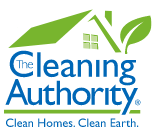Whether you’re in the industry or not, the cleaning process is complex. There are so many terms thrown out there that it’s easy to become confused or unsure. To make it easier on everyone, let’s go through the vocabulary that you’ll commonly hear within the cleaning industry.
General Cleaning Terminology Broken Down
A
Abrasion
Using friction to wear away or clean objects.
Abrasive
A product that uses abrasion – cleaners and polishers can contain abrasive ingredients.
Acid
Ranging from mild to strong, acid comes from a compound that ionizes in water which forms hydrogen ions. Acids remove mineral deposits and rust stains, making them common use for toilet bowl cleaning, removing rust, and ridding surfaces of hard water stains.
Acrylic Floor Finish
A water-based coating that dries quickly to leave a glossy finish that’s slip-resistant and tough on abrasives.
Active Ingredients
There are both active and inert ingredients in cleaning products; active ingredients are the chemicals meant to eliminate or kill bacteria, germs, or other intended items.
All-Purpose Cleaner
A gentle cleanser that doesn’t damage surfaces, All-Purpose Cleaners are useful for everyday removal of dirt or grease.
Ammonia
When used in cleaning, it’s referred to as Household Ammonia. A colorless, alkaline gas, ammonia is used for window and glass cleaning.
Anhydrous Soap
A waterless soap – all water has been removed.
Anionic Surfactant
For use in high-sudsing detergents, anionic surfactants contain a negatively charged molecule.
Antibacterial
A substance that kills or slows the growth of bacteria (not effective for viruses).
Antimicrobial
An agent that kills microorganisms or stops their growth, antimicrobial formulas destroy bacteria, fungi, and pathogenic viruses.
B
Bacteria
Living organisms which are made from a single cell and responsible for all human diseases.
Bactericide
A disinfectant cleaner that kills bacteria.
Bacteriostat
An agent that stops bacteria from reproducing but doesn’t kill it.
Biodegradable
The ability of a substance to be broken down, or decomposed, by bacteria.
Bleach
A product that chemically whitens by converting soils into colorless particles that can wash away.
Buffing
Using a pad, cloth, or brush to polish a surface.
Builder
A material that upgrades or protects the cleaning efficiency of a surfactant by inactivating water hardness, supplying and maintaining alkalinity, and preventing emulsification.
Build-up
When layer upon layer of dirt or finishing product continues to add onto a surface without scrubbing layers in between, a heavy deposit will form.
C
Cationic Surfactant
Commonly used as disinfectants and sanitizers, cationic surfactants are also known as quaternary ammonium compounds.
Chlorine Bleach
Very strong oxidizing agents intended for the removal of stains, whitening, and deodorizing clothing.
Cleaning
The process of locating and removing undesirable substances, such as dirt or other pollutants.
Concentrate
A strong liquid solution, typically undiluted, that you may need to mix with water to use.
Contaminate
Contact with dirt or another source that makes something unclean or polluted.
Corrosion Inhibitor
Any material that works to prevent surfaces from wearing away.
Cross-Contaminate
An unintentional transfer of bacteria from one surface to another.
D
Damp Mopping
Using a slightly wet cloth or mop to clean mildly dirty areas.
Decontaminate
Using cleaning, disinfecting, and potentially sterilization to remove substances.
Degreaser
A chemical product made for the removal of grease and oily substances from surfaces.
Deodorizer
A product that masks, eliminates, or neutralizes odors.
Detergent
An agent made without soap for washing and cleaning.
Dilute
Adding water to a concentrate to reduce the strength of the product
Disinfectant
A product that kills microorganisms.
Distilled Water
Pure apart from dissolved gases, distilled water has had salts removed.
Dry Mopping
Using a fabric mop head to remove dust and dirt, similar to sweeping.
Dwell Time
The amount of time a disinfectant must sit on a surface to disinfect before rinsing.
E
Emulsification
The action of breaking up fats and oils, dispersing one into small droplets within the other.
Etch
A chemical change on the outside of a smooth surface, creating roughness.
F
Finish
A topcoat that protects a surface.
Foaming Agent
A material that increases the mass of bubbles formed on liquids.
Fungi
Harmful to health, fungi are multicellular organisms such as mold or mildew.
G
Germ
A microorganism that can cause disease.
H
Hydrophilic
Water-soluble; fibers that easily absorb water.
I
Insolubility
When one substance cannot dissolve into another.
M
Mild Cleaner
A gentle product that does not contain abrasives, using non-damaging agents to dissolve dirt instead.
Mildew
A form of fungus that grows on damp organic material such as carpet or upholstery.
N
Neutral
A non-acidic and non-alkaline chemical state.
Non-Chlorine Bleach
A product containing an alternative oxidizing agent than bleach, such as peroxide, to remove color or disinfect.
Nonionic Surfactant
A surface-active agent with no electrical charge, used in detergents to remove grease.
O
Oxidation
A chemical reaction that changes the structure of the material, i.e., breaking down carpet stains.
P
Pathogens
A broad term for any bacteria or organism that can cause disease.
Pesticide
An umbrella term that covers any substance used to control organisms that are harmful to plants or animals.
pH Value
A measurement of a substance’s acidity or alkalinity from 0-14 with zero being
Phosphates
An ingredient added to detergents as a “builder” to soften hard water.
Pine Oil
Used as a cleaner, disinfectant, and insect repellant, pine oil has natural deodorizing capabilities.
Pre-Spot
Removing obvious or large stains before general cleaning.
S
Sanitize
Reducing 99.9% of bacteria but not fully eliminating.
Saponification
The process of making soap: Converting fat with alkali treatment.
Solvent
A liquid that dissolves another substance.
Squeegee
A tool with a flat rubber edge that’s used to control or remove liquids from floors and windows.
Stripper
A harsh solution that removes dirt and old wax from a floor.
Surfactant
A substance that lowers the surface tension of water, increasing the foaming, dispersing, and emulsification capabilities.
Suspension
A cleaning agent holding insoluble dirt and grime within the cleaning solution to prevent it from getting back onto a surface.
W
Wax
A natural protective coating for hard surfaces.
Wet Mopping
Using soapy water or a floor cleaner with a mop that has a reusable head to remove grime buildup or spills.
With so many terms being used in the industry, it’s nice to clear up their meanings (and safer to know what’s what!). There are plenty of myths about the cleaning world – hopefully, this guide helps you to better understand some of the nuances.
P.S.: Did you catch our last post with advice on the upcoming cold and flu season? We list areas you may overlook as you’re cleaning and discuss the impact this time of year has on cleaning franchises.
P.S.S.: Want to learn about how you can become a franchise owner? Give us a call at (888) 718-4534.

